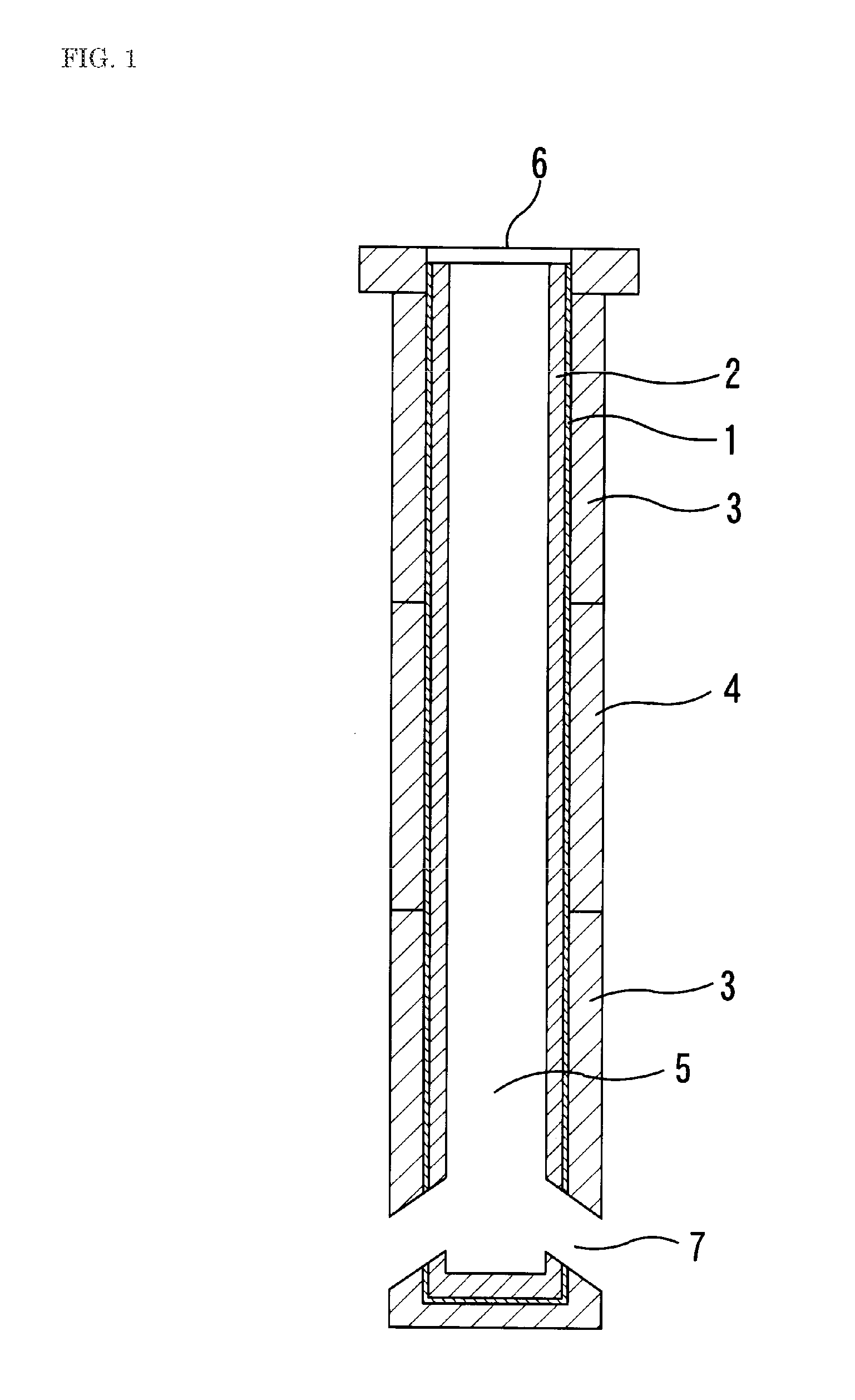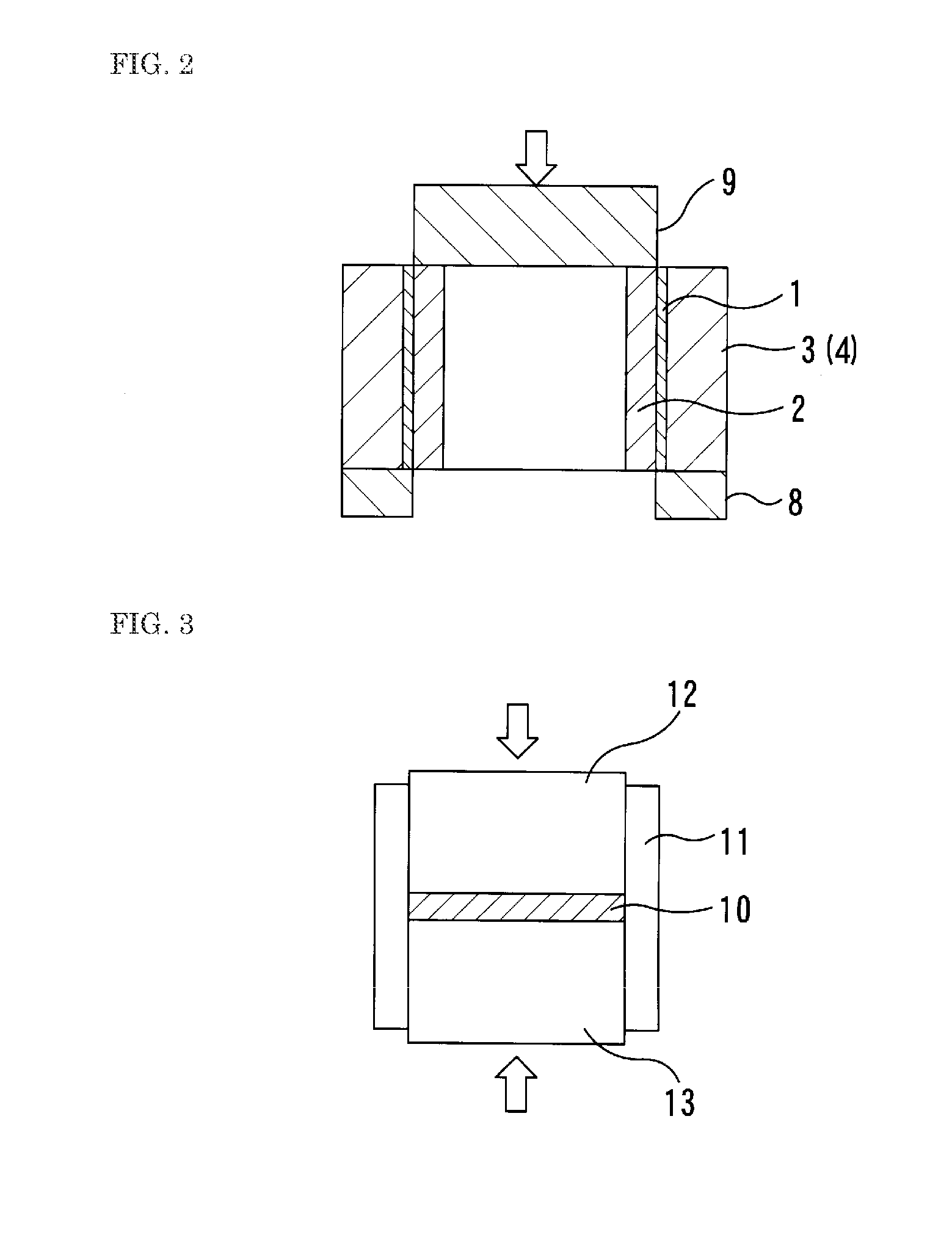Refractory material for nozzle for use in continuous casting, and continuous casting nozzle
a technology of refractory materials and nozzles, which is applied in the direction of packaging, liquid transferring devices, molten metal supply equipments, etc., to achieve the effect of preventing an alumina-clogging phenomenon and easy flow
- Summary
- Abstract
- Description
- Claims
- Application Information
AI Technical Summary
Benefits of technology
Problems solved by technology
Method used
Image
Examples
example
[0170]Various examples will be described below.
example a
[0171]Example A is a result of a test for checking an influence of an average radius R of each particle of a hollow refractory aggregate and a ratio of the average radius R to an average wall thickness t of the particle (R / t) on breaking of the hollow refractory aggregate when an external force of 2.5 MPa is applied thereto.
[0172]Table 1 shows a material / structure and a test result of each sample in Example A.
TABLE 1ComparativeInventiveInventiveInventiveComparativeInventiveInventivesample 1sample 1sample 2sample 3sample 2sample 4sample 5Material of hollow refractory aggregatealumina-silicate based materialAverage radius Rμm2.52.52.535250250250Average wall thickness tμm1.30.250.21312510Ratio (R / t)1.91012.53581025Breakup rate in container during vertical%9598999099compression by 2.5 MPa
[0173]A hollow refractory aggregate for test samples was obtained by selecting one of available products generally sold on the market, dispersing particles thereof in water, collecting floated ones of t...
example b
[0179]Example B is a result of a test for checking an influence of a volume percentage of a hollow refractory aggregate with respect to a refractory material, on a compressibility and a bonding strength, and a result of a simulation test for casting of molten steel based on inner-bore heating.
[0180]Table 2 shows a composition and a test result of each sample in Example B.
TABLE 2ComparativeComparativeComparativeInventiveInventivesample 3sample 4sample 5sample 6sample 7Hollow refractory aggregatevolume %0581025Reminder (matrix)volume %10095929075Mixing rate in remainder (100) *1Graphite fine powder (45 μm or less)mass %7575757575Al—Mg alloy (45 μm or less)mass %1010101010MgO fine powder (45 μm or less)mass %1010101010Phenol solution (as C)mass %55555Rate of carbon in remaindermass %8080808080Compressive rate (to 2.5 MPa) at 1000° C.%3461228Compressive rate (to 2.5 MPa) at 1500° C.%2351026Bonding strength at 1000° C.MPa4.002.902.101.501.00Bonding strength at 1500° C.MPa2.602.101.501.30...
PUM
| Property | Measurement | Unit |
|---|---|---|
| pressure | aaaaa | aaaaa |
| temperature | aaaaa | aaaaa |
| temperature | aaaaa | aaaaa |
Abstract
Description
Claims
Application Information
 Login to View More
Login to View More - R&D
- Intellectual Property
- Life Sciences
- Materials
- Tech Scout
- Unparalleled Data Quality
- Higher Quality Content
- 60% Fewer Hallucinations
Browse by: Latest US Patents, China's latest patents, Technical Efficacy Thesaurus, Application Domain, Technology Topic, Popular Technical Reports.
© 2025 PatSnap. All rights reserved.Legal|Privacy policy|Modern Slavery Act Transparency Statement|Sitemap|About US| Contact US: help@patsnap.com



